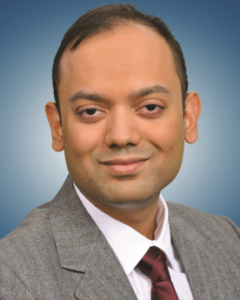Quantum Limits of Optical Imaging
3 Forbes Rd
Lexington, MA 02421
USA
Photonics Society joint meeting with New England Section of OSA and co-sponsoring Aerospace and Electronics Systems Society
5:45PM – Networking
6:45PM – Dinner RSVP Only
7:30PM – Meeting
Dr. Saikat Guha – Raytheon BBN Technologies
The fundamental limits of optical information processing — be it the maximum rate of reliable communications, resolution of an optical imager, or the computational power of an optical computer — are ultimately governed by the laws of quantum mechanics. Most conventional systems, which do not exploit the manifestly quantum effects of light, are limited to performance inferior to these limits. In this talk, I will discuss a few simple illustrative problems in active and passive optical imaging, where exploiting quantum effects — either by using quantum illumination of the scene, or by employing non-standard all-optical pre-detection processing locally at the receiver (or both) — can yield improved performance over a classical imager that uses the same transmit power and optical bandwidth. I will discuss general characteristics of imaging scenarios where quantum improvements can be expected to be had, and the respective natures of enhancements in imaging performance. I will conclude with some theoretical open problems and photonic-device challenges that will need addressing to realize the aforesaid enhancements.
Biography: Saikat Guha is a Lead Scientist with the Quantum Information Processing group at Raytheon BBN Technologies (BBN). He received his Bachelor of Technology degree from the Indian Institute of Technology (IIT) Kanpur in 2002, and his Masters and Ph.D. degrees from the department of Electrical Engineering and Computer Science (EECS), Massachusetts Institute of Technology (MIT) in 2004 and 2008 respectively. Saikat represented the Indian team at the International Physics Olympiad in 1998, where he received the European Physical Society (EPS) award. He leads several projects, funded by DARPA, ONR, NSF, DoE, and ARL, on topics surrounding fundamental limits of photonic information processing, with applications to optical communications, sensing and computation. He received the Raytheon 2011 Excellence in Engineering and Technology Award, Raytheon’s highest technical honor, for work his team did on the DARPA-funded Information in a Photon program. He was a co-recipient of an honorable mention in NSA’s 2016 Cybersecurity Best Paper Award for his work on Quantum-Secured Covert Communications.
This meeting begins at 7:30 PM Thursday April 20th, 2017 and will be located at 3 Forbes Road (a MIT Lincoln Laboratory facility), Lexington, MA, 02420. The meeting is free and open to the public. All are welcome.
NES/OSA requests that you RSVP for the meeting by April 19 (dinner by April 17) at http://nesosa.org/meetings/meeting-signup/signup?cyc=yes&mdate=20170420&cdate=20170417
Prior to the seminar there will be social time and networking starting at 5:45 PM. Dinner is by reservation only, and must be done before April 17 @ 6 PM using the above registration link. The seminar will begin at 7:30PM. For more information contact Ajay Garg, Boston IEEE Photonics Society chapter chair at ajay.garg@ll.mit.edu, or visit either the NES/OSA website at www.nesosa.org or Boston IEEE Photonics Society website at www.bostonphotonics.org.
IMPORTANT NOTE: This meeting will be held at the Forbes Road site for MIT Lincoln Laboratory as the Cafeteria is not available due to heightened security at the main MIT-LL site.
The address is: 3 Forbes Road, Lexington, MA 02420 (about 1.5 miles south of the main MIT-LL site) and a map is available at: http://www.ll.mit.edu/about/mapForbesRoad.html. Entrance is by the flags.

